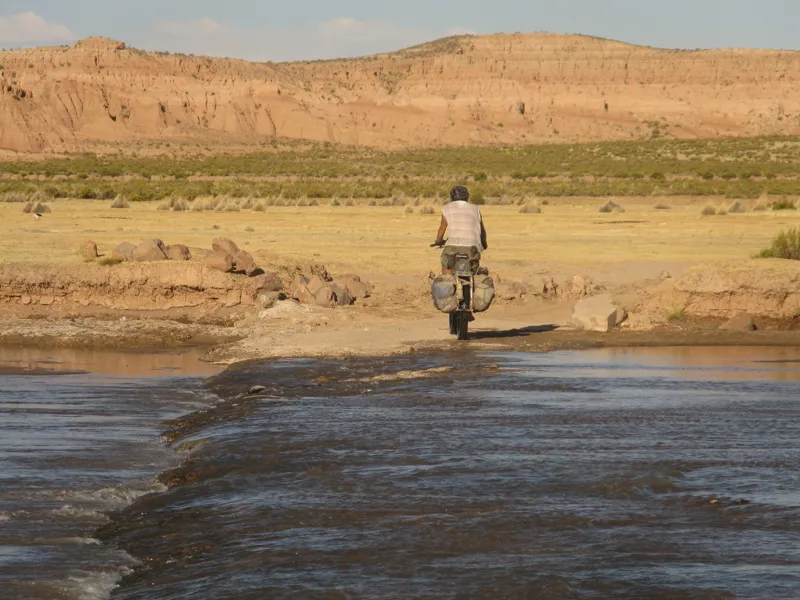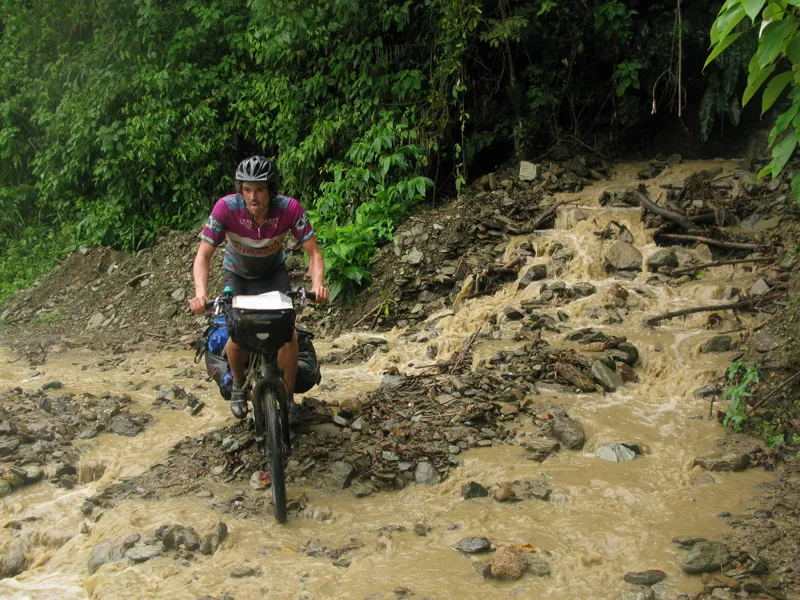The 'big trip' is the dream of a huge number of cyclists. For many that’s just how it stays – a dream – while for others it means nothing more strenuous than a week of gentle pedalling along the Loire Valley in France. But for a few intrepid riders it’s about a genuinely life-changing adventure.
Jacob Thompson’s epic three-and-a-half year, 21,125-mile journey from the tip of Alaska to Ushuaia at the bottom Argentina definitely falls into the latter category. BikeRadar found out more about the ups and downs of cycling the Continental Divide.
The really long way down
In July 2006 Jacob left behind a nascent career as a history teacher to set out with two friends – Goat and Sean – and a plan to travel the length of the Americas, following the Continental Divide by bike. The trip had started life as Goat’s plan to cycle the Great Divide Route from Canada to Mexico, but over the course of the next few years at college it evolved. And how it evolved.
With an Xtracycle cargo bike loaded up with all the camping kit, food and equipment they’d need for the huge variety of terrain and temperatures over the next 21,000 miles, the trio set out on their epic journey. For Jacob, the moment of departure is a vivid memory: "The first day we got on our bikes in Prudhoe Bay, Alaska and began chasing the southern horizon was definitely life-changing".
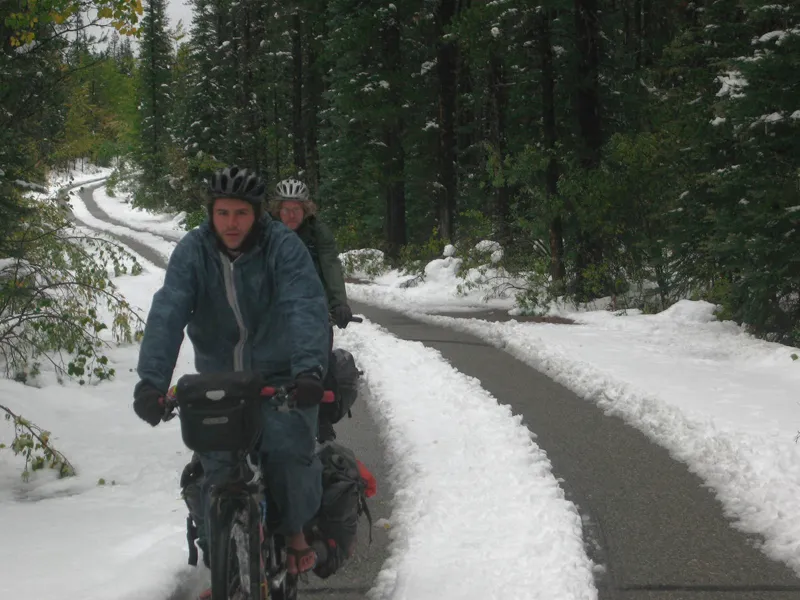
The early stages of the ride were riddled with the sort of challenges that would have had most people throwing in the towel and heading home. In the very first week of the trip, Jacob was chased by an Alaskan wolf. Moving from Canada to Montana, the group was caught by an early winter, resulting in a couple of months of cycling through heavy snow.
During a particularly bad blizzard in Montana, they only managed to survive the sub-zero temperatures by being fortunate enough to come across an abandoned hunting cabin fully furnished with firewood.
Spending more than three years travelling through remote areas meant that the friends encountered many challenging and often perilous scenarios. "Living exclusively off a bike for multiple years lends itself to plenty of trying situations," Jacob says. "On the coast of Honduras, we were caught in a tremendous tropical storm and had to hole up in a stick hut until it passed. People lost their lives within a mile from where we were.
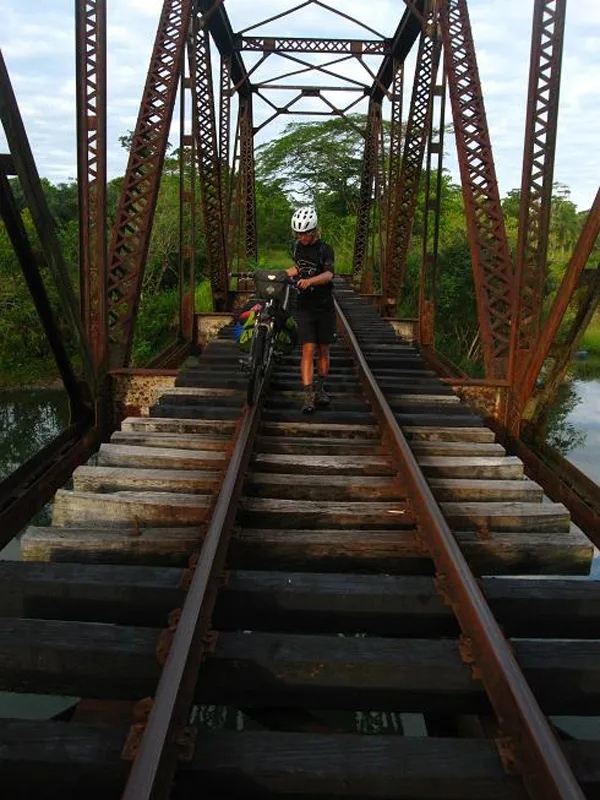
"Dozens of times we were woken up with guns pointed at us. Sometimes it was the country’s military, other times it was just nervous landowners – but in every circumstance, once they figured out we were just passing through, the situation managed to resolve itself.
"I suppose the most dangerous experience of the trip, though, was getting stuck between landslides along a route and having to carry my bike across active slides or crumbling cliff edges." But that's not all – the group were even thrown in jail for riding bikes in the Grand Canyon!
Despite the inevitable problems associated with such a trip, the landscapes and communities the trio and their occasional guest riders passed through more than made up for any risk and discomfort. Much of the route followed the mountainous spine of the Continental Divide, offering unique experiences and stunning vistas.
In Guatemala, Jacob and his friends rode and pushed their bikes up Mount Tajumulco – at 4,220m the highest peak in Central America – took some truly amazing photographs, then rode right back down again.
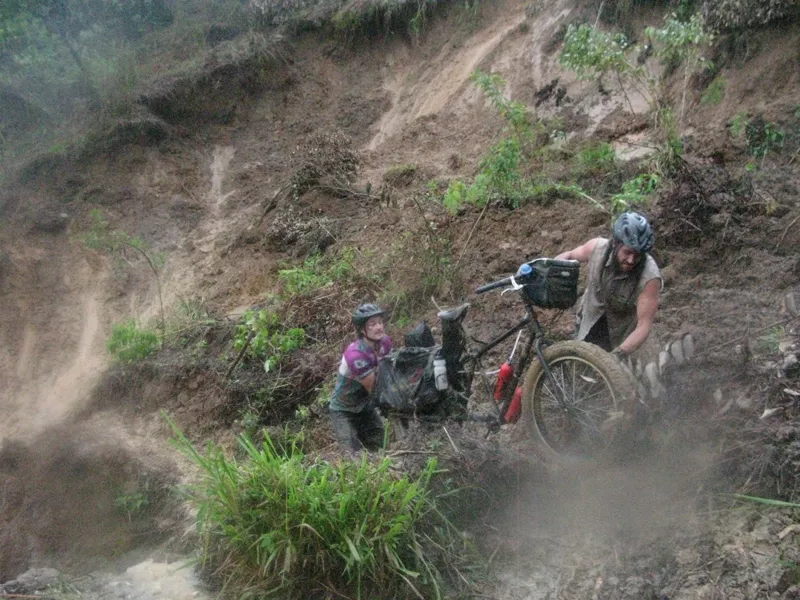
Other memorable events include crossing over into Mexico, where they learnt Spanish, ate tacos and rode through the Copper Canyon. They also pedalled their way across the Salar de Uyuni – a giant salt lake on the Bolivian Altiplano – and made the first descent by raft down the Cricamola River in Panama through the mountainous and near impenetrable Ngöbe-Buglé Territory.
Possibly most memorable of all, and as life-changing and affirming as their departure from Alaska three-and-a-half years earlier, was the final arrival in Ushuaia that signaled both the end of their adventure and the successful achievement of the goals they’d had since their days of dreaming at college.
But it was the Cordillera Blanca of Peru, a mountain range that's part of Andes, that was deemed to be both the literal and figurative highlight of the journey. "A mountain range with 33 peaks over 18,500ft along a 100-plus mile mountain range seemed to me to be the essence of the spine," Jacob tells us.
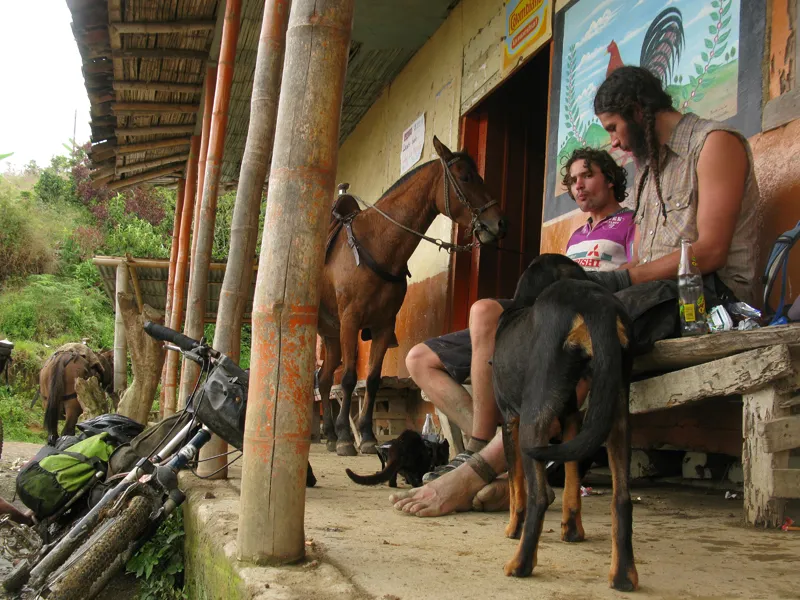
"The only traffic we'd encounter along the tiny landslide-damaged dirt roads were groups of cattle heading to their next pasture. When we resupplied on food, we’d have to go from house to house looking for our staples, like potatoes and cheese. We'd climb up a mountain range for multiple days and encounter descents that would take 8-10 hours. It was on this mountain range I felt we were truly living the dream and riding the spine."
Setting off on such a long journey makes for tight budgetary constraints, and Jacob and his pals survived on very little, despite the requirements of their weary bodies. "Our budget would fluctuate a bit, depending on the country we were in, but we were usually looking at about 10 bucks a day for everything, which was pushing it considering the huge quantities of food that we would consume," he says.
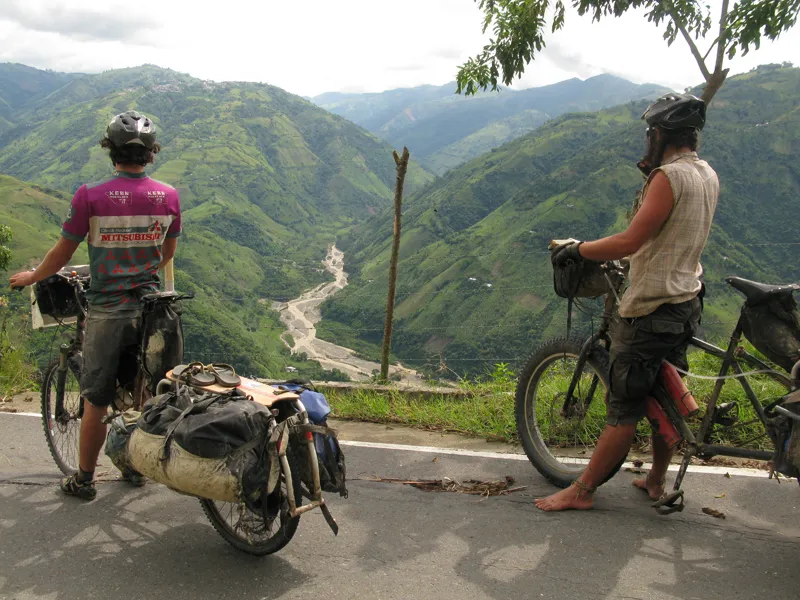
"It could be rough if someone was sick and we couldn’t afford a hotel. We’d just have to camp out or keep moving, which made recovery tough." Jacob’s teaching job soon seemed a million miles away, and he turned his hand to writing articles and selling photographs to adventure magazines and websites in order to bring in funds to allow the trip to continue.
"It’s impossible to experience this kind of journey, an odyssey both physical and personal, without taking something away from it," he says. "This particular expedition has left a legacy of self-reliance and versatility, and a willingness to adapt to the needs of the moment, meaning that even coming back to real life hasn’t caused too many problems."
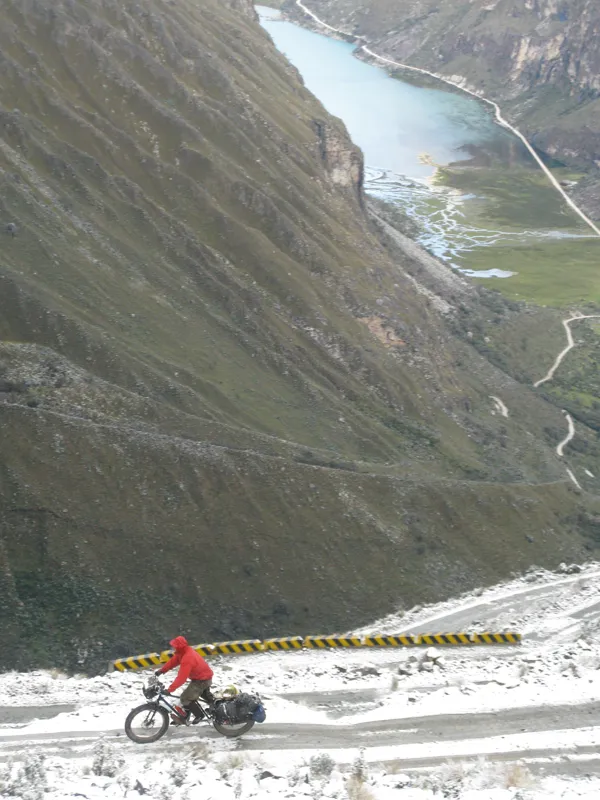
"Reintegrating isn’t too difficult. After two-three weeks of anything it becomes the norm," he laughs. Life on the trail was ultimately its own law, with little that could be managed or imagined. Jacob’s advice to anyone contemplating this kind of long haul trip is simple: "For an adventure like this, there's very little you can plan for. Your best bet is to get going and figure it out on the way."
Jacob, Goat and Sean’s experiences will soon be committed to paper, in a book penned by Jacob, on schedule for release early next year. I asked him if reliving such an amazing adventure while writing the book might give him itchy feet to take off again on a new challenge. "I feel very satisfied with the trip and believe that we made the most out of it," he admits. "For the time being, I am definitely enjoying the break. I still ride just about every day – only now I don’t have to haul all my gear around."
As for future plans, he’s hanging up his pedals for a while in favour of paddles. "I plan to work and save up money for another adventure. I’m thinking of an epic sea-kayak trip." An idea inspired almost certainly by his very first sea kayaking experience, where he crossed the notoriously troublesome Darien Gap, passing through the Kuna Yala Comarca reservation in Panama as they went.
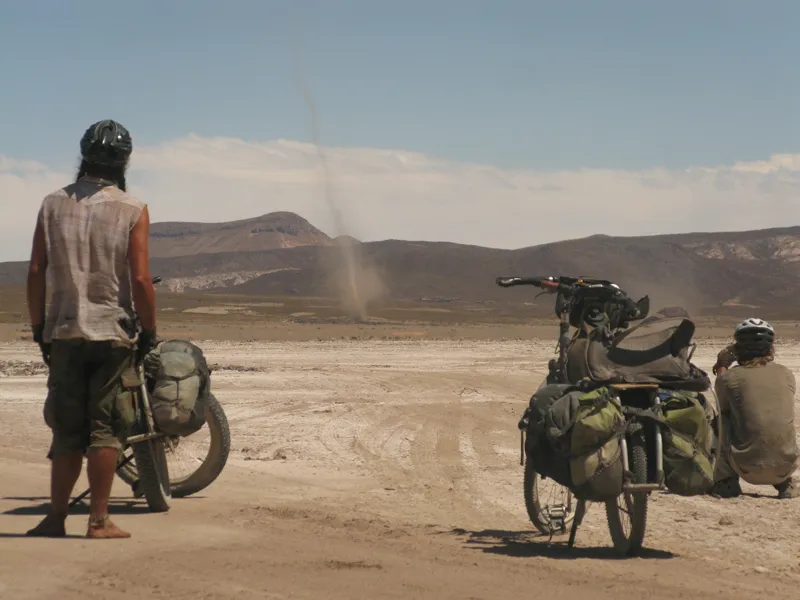
Here, despite never having paddled before in their lives, they bought kayaks and strapped their bikes to the back of them, crossing the open ocean between tiny sand bar islands, before finally reaching Colombia over a week later – sunburnt but intact.
Leaving behind his career as a history teacher at Fisher Middle School in Los Gatos, California, is one thing that Jacob has found hard. His goal was to make a difference, to motivate and enthuse his students in the hope that they would make the most of their lives. He speaks fondly of the tutors and staff at the school who helped inspire him.
However, if there’s one thing that’s come of his incredible trip from one tip of the Americas to the other, it’s that this journey is sure to prove inspirational to others. His parting words? "Ignore all the naysayers and discover things for yourself."
